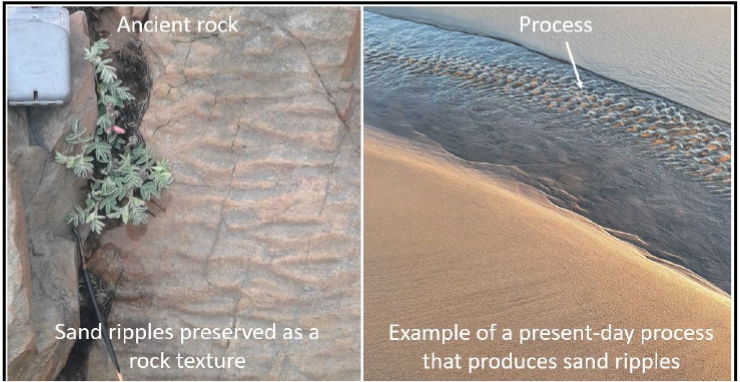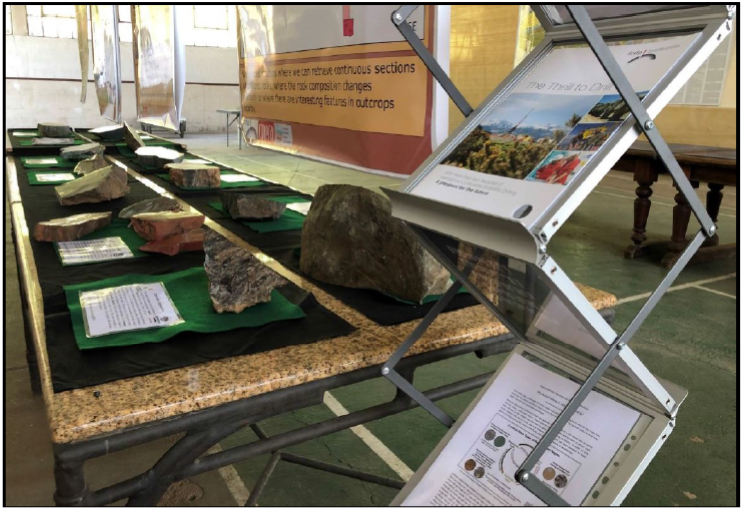The Moodies-BASE Drilling Project is a fitting event to mark international recognition of the value of the Barberton-Makhonjwa Mountains, which, in July 2018, were proclaimed a UNESCO World Heritage Site (BMM WHS). This drilling project has been carefully planned for over five years, by dozens of acclaimed geologists from many countries, led by Prof. Christoph Heubeck from Jena University in Germany.
This scientific drilling project intends to expand knowledge of the early earth and the beginnings of life, as recorded by these most ancient rocks. It will also provide the basis for scientific exhibitions to support tourism, visitor awareness and education locally, nationally and internationally. And it has nothing to do with searching for valuable minerals and resources.
The project started in late November 2021, encountering some technical and wet-weather delays before the Christmas break. It is now fully operational with two drill rigs producing underground rock samples that are being recorded and temporarily stored in the Barberton Iron And Steel (BIAS) hall of the Barberton Museum. Visitors to the BIAS hall will have access to a geology exhibition that includes rock specimens, geological maps, drill bits and a work space that showcases how freshly-drilled rock samples are marked, cut, photographed, described and stored.
(‘Moodies’ refers to the youngest of the three ancient rock sequences of the Barberton region; BASE is the acronym for Barberton Archaean Surface Environments.)

An example of an ancient sandstone from the Moodies Group of the Barberton-Makhonjwa Mountains with a well-preserved textural clue about a surface process of the early Earth.
Over the next four months about 4km of drill-core is expected from eight holes, providing fresh rock samples to research labs in over a dozen countries. The project will ultimately produce a series of research papers over the next few years. These will help explain our planet’s earliest history, the origins of life on Earth and, by extension, on other planets too. Our WHS is the preferred global location to search for these answers and is one of the main reasons for it being proclaimed a World Heritage Site by UNESCO.
The purpose of our WHS includes, among others:
• protecting its geological assets (geoheritage) for their high scientific value;
• using these assets and their valued status to attract researchers and visitors from around the world to promote further research and educational tourism;
• informing visitors in ways that are enjoyable and educational, and to benefit local communities by way of sustainable jobs in tourism.
Carefully planned research is essential to this WHS’s existence; it enhances our knowledge of our planet and expands the Outstanding Universal Values of our WHS. This is why the Moodies-BASE Drilling Project has the support of all the relevant authorities and of the landowners where each of the drill holes is located.
This project will significantly expand our knowledge of events recorded in the uniquely ancient rocks that date back more than 3 billion years ago. It will also provide, in Barberton Museum’s BIAS building, the basis for a permanent physical display of ‘big science in action’ that will create awareness locally and internationally The public is encouraged to visit the BIAS hall of the Barberton Museum in order to learn more about the geology of the Barberton region and the concept of drilling for scientific knowledge instead of underground economic resources. Visits to drill sites may be organized by sending an email to moodiesbaseproject@gmail.com. For project updates, please like and follow the facebook page ‘Moodies-BASE Project’ where a link to daily project updates has been posted.

Rock specimens displayed in the Barberton Iron And Steel (BIAS) Hall of the Barberton Museum where the public can view the processing and storing of rock samples freshly drilled from the Barberton-Makhonjwa Mountains World Heritage Site.
